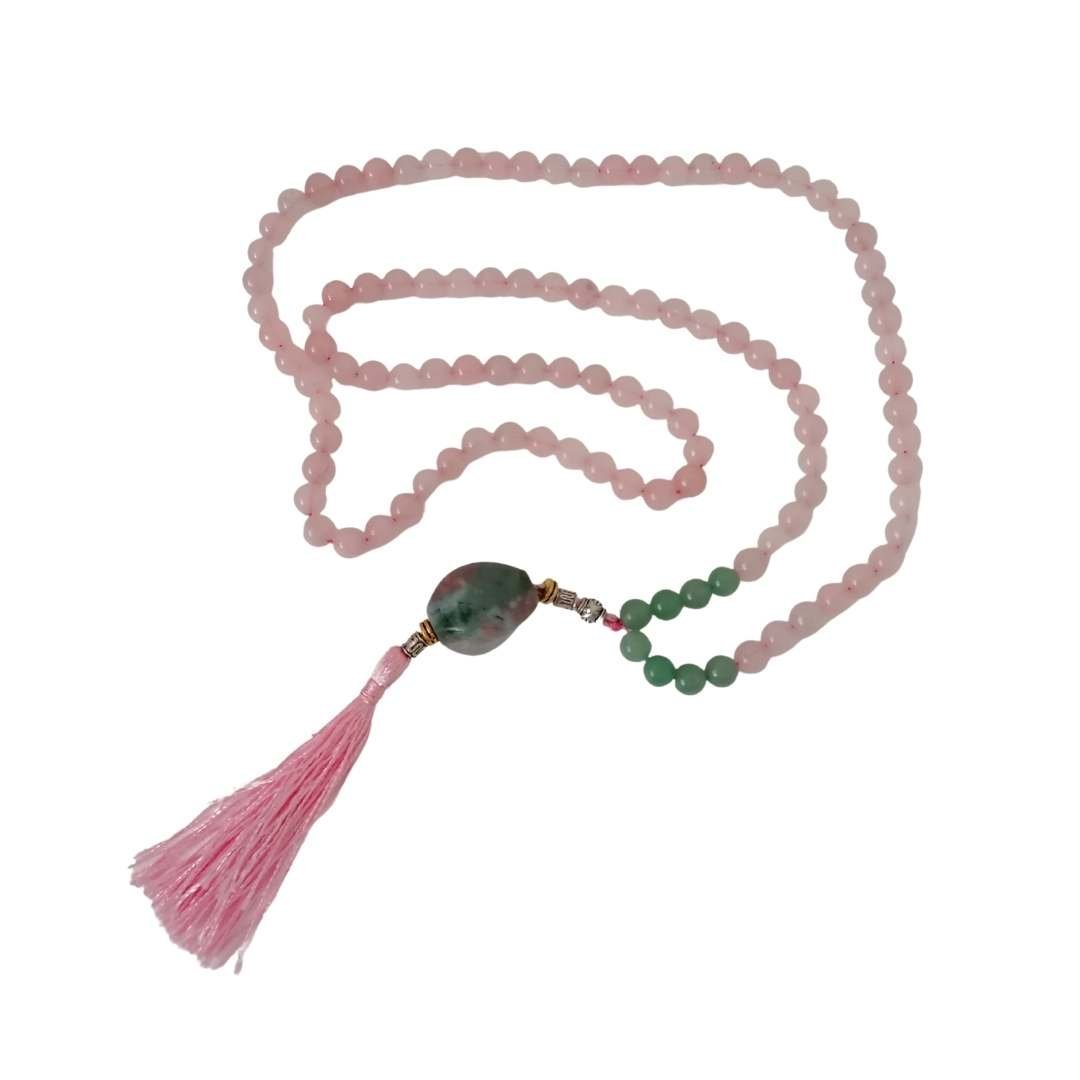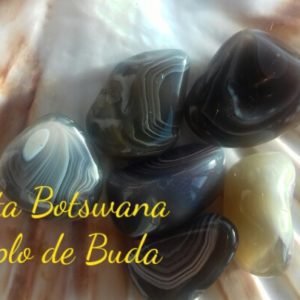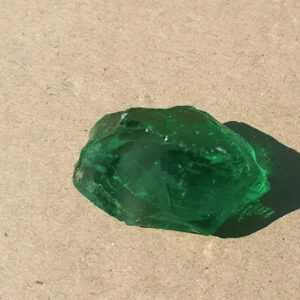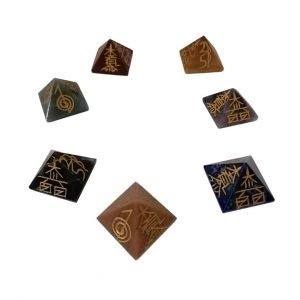Description
Japa Rose Quartz and Aventurine Case o with Pink Sweepers of 108 8mm beads and Agate Meru India
- The meaning of Rose Quartz is to make you more accessible by illuminating your aura with love and understanding. The love you seek will first appear in yourself, and then you will begin to recognize everything around you. Let go of the pain that created the energy blockages and allow the rolled Rose Quartz to remove the stress tension from your life. Replace all the toxic emotions occupying space in your heart with the rose quartz energy of love.
- Green Aventurine, or also called green quartz, is a lucky stone. Known to many as the stone of the game, the name aventurine comes from the Italian word “the ventura” meaning “by chance”. All green crystals bring abundance due to working the heart chakra ( where the key to our mission lies), but the extravagant energy of this fortunate crystal is especially favorable for luck.
About Japa Malas
A Japa Mala, or simply suitcase (Sanskrit: ,いいい; mālā), refers to a series of accounts, popular in India and Buddhist countries, that are used to keep count while reciting, singing or mentally repeating mantras or the name(s) of a particular deity. In both India and Asia, the recitation of mantras is a very popular practice. As sacred utterances, mantras can be silently repeated or sung for different reasons and purposes. Used predominantly by Hindus, Buddhists and Sikhs as auxiliaries of meditation and devotion, mantras are sound vibrations that instill concentration in the devotee and facilitate spiritual growth.
Japa Mala’s devotional practice resembles the Catholic use of the rosary – the Rosary. Both strings of beads help their respective religious believers record the number of times the prayer/mantra has been said.
The Sanskrit word japa is derived from the root Jap, which means “to pronounce in a low voice, to repeat internally, to murmur”.
A wide variety of materials is used to make suitcase accounts. In Hinduism, the Vaishnavas usually use Tulsi’s Japamala beads. The Shaivitas use Rudraksha’s accounts. Aghori practitioners usually use human skull fragments for their bags.
Some Tibetan Buddhist traditions call for the use of bone (animal, more common yak) or sometimes human, with past Lamas bones being the most valuable. Others use wood or seeds from the Bodhi tree or seeds from the Lotus plant. Semi-precious stones, such as kornaline and amethyst, can also be used. The most common and least expensive material is sandalwood. In Hindu Tantra, as well as in Buddhist Tantra or Vajrayana, the materials and colors of beads can relate to a specific practice.
There are several pieces and they all vary in color, size and texture because they are natural seed crystals and unique in essence
In case of doubts regarding this product on the Templo de Buda site, you can contact Whatsapp, email or Facebook



 Adquira este produto e obtenha
Adquira este produto e obtenha 



Reviews
There are no reviews yet.